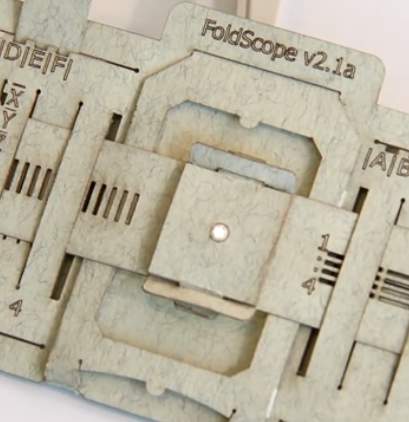 Stanford bioengineering professor Manu Prakash was worried that because the developing world could not afford microscopes, they were prescribing malaria pills without identifying specific strains, and unwittingly boosting the resistance of some of the bugs. So he set out to make the best possible disease-detection instrument he could and make it cheap enough to distribute almost for free.
Stanford bioengineering professor Manu Prakash was worried that because the developing world could not afford microscopes, they were prescribing malaria pills without identifying specific strains, and unwittingly boosting the resistance of some of the bugs. So he set out to make the best possible disease-detection instrument he could and make it cheap enough to distribute almost for free.
He and his students came up with an origami-like folded cardboard device called the “Foldscope”. It can be produced with just 50 cents for materials and is so durable that it can be stomped on and dropped into a bucket of water, and it still works.
The bookmark-sized piece of layered cardstock with a micro-lens can magnify up to 2,000 times and detect dangerous blood-borne diseases like malaria, African sleeping sickness, schistosomiasis and Chagas.
“They’re literally as good as many research microscopes you can buy,” said Prakash.
One of the unique design features of the microscope is the use of inexpensive spherical lenses rather than the precision-ground curved glass lenses used in traditional microscopes. These poppy-seed-sized lenses were originally mass produced in various sizes as an abrasive grit used to wear down sharp metal edges.
The Foldscope’s super magnification rate comes direct from the unique optical physics created when the spherical lens is held close to the eye. The device can also be customized in myriad ways, using watch batteries and LED lights.
In addition, Prakash is passionate about mass-producing the Foldscope for educational purposes, to inspire children to explore the microscopic world. He is giving away 10,000 build-your-own paper microscope kits to citizen scientists with the most inspiring ideas for what to do with his invention. Visit The Ten Thousand Microscopes Project for details.
(WATCH the video below, and LEARN More at scopeblog.stanford.edu)



















